Artes Mundi 8: Filmmaker Apichatpong Weerasethakul wins £40,000 prize
- Published
The exhibition includes a sculpture that hisses - and part of it levitates
Indie Thai filmmaker Apichatpong Weerasethakul has won the £40,000 Artes Mundi contemporary art prize.
The judges said his film Invisibility was "a powerful weapon in these turbulent times".
The 48-year-old gave a UK premiere to his dream-like work, projected over two screens and showing two figures rising from their beds in separate rooms.
He was chosen from a shortlist of five international artists, all currently on show at National Museum Cardiff.
It is the wealthiest prize in the UK and was launched in 2004.
"This is a special day and I feel very honoured," he said.
"Winning a prize like this encourages me to continue my work and to continue to ask more questions about the world that we all share."
Weerasethakul's 2010 film Uncle Boonmee Who Can Recall His Past Lives won the Palme d'Or at Cannes and his 2015 film Cemetery of Splendour was also critically acclaimed.
His latest film Memoria, shot in Colombia and starring Tilda Swinton, is to due to be released later this year.
The judges said: "While in the west Weerasethakul is better known as a feature film director, the jury wished to pay homage to the vigorous interrogation in his gallery work of filmmaking, storytelling and the political and social position of the artist."
"Through the manipulation of time and light, Weerasethakul constructs tenuous bridges for the viewer to travel between the real and the mythical," they said.
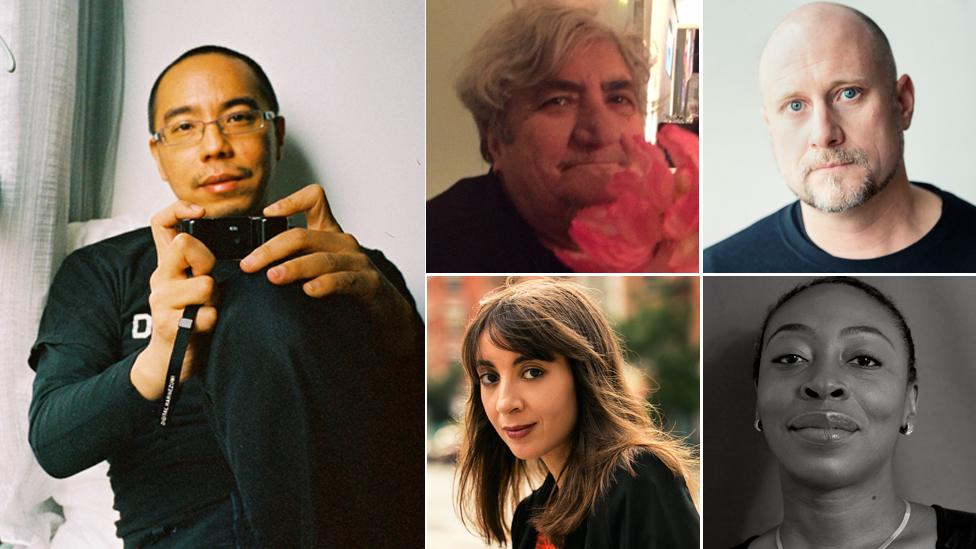
The winner Apichatpong Weerasethakul (left) and other shortlist artists clockwise from top left, Anna Boghiguian, Trevor Paglen, Otobong Nkanga and Bouchra Khalili
His film has been described by his studio , externalas mirroring "the troubled state" of Thailand's politics. "It proposes a decayed vision of the future where one needs to constantly evades reality."
"The viewing experience shifts between seeing and not-seeing, fact and fiction, space and void."
Karen Mackinnon, Artes Mundi director said that the shortlist had all been really high standard "all very different works, with incredibly colourful installations".
"I think this exhibition has more connections thematically than any other we've had - of landscape, what's happening ecologically, political issues about power structures, of racism, very pertinent issues which affect all our lives."
A quick guide to the shortlist
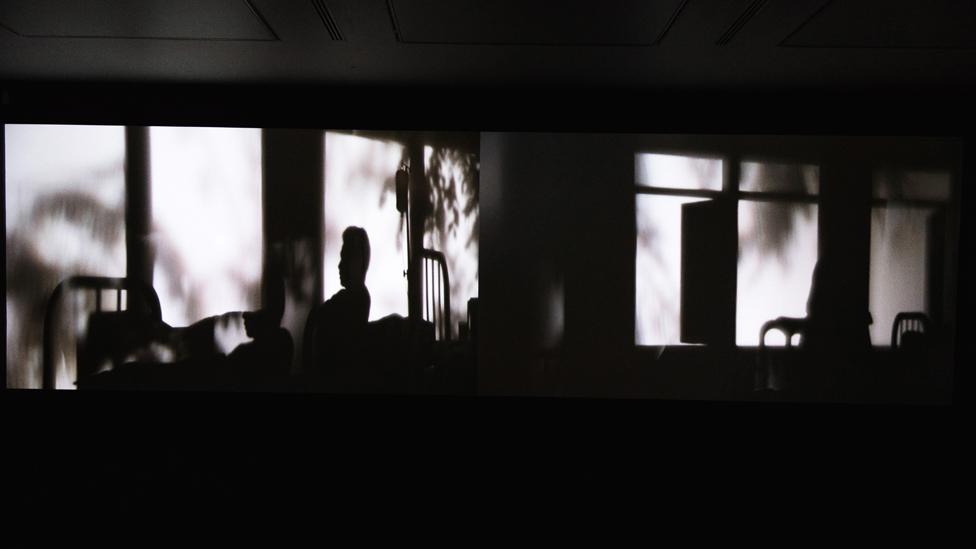
Two figures in different rooms begin to infiltrate each other's dreams, in Apichatpong Weerasethakul's two-channel video installation
Apichatpong Weerasethakul (Thailand) - WINNER
The filmmaker's video installation Invisibility - created in 2016 but being shown for the first time in the UK - is a dream-like projection from two rooms, side by side.
His films have already won festival prizes, including the Cannes Palme d'Or.
His upcoming film Memoria starring Tilda Swinton, will be released later this year.
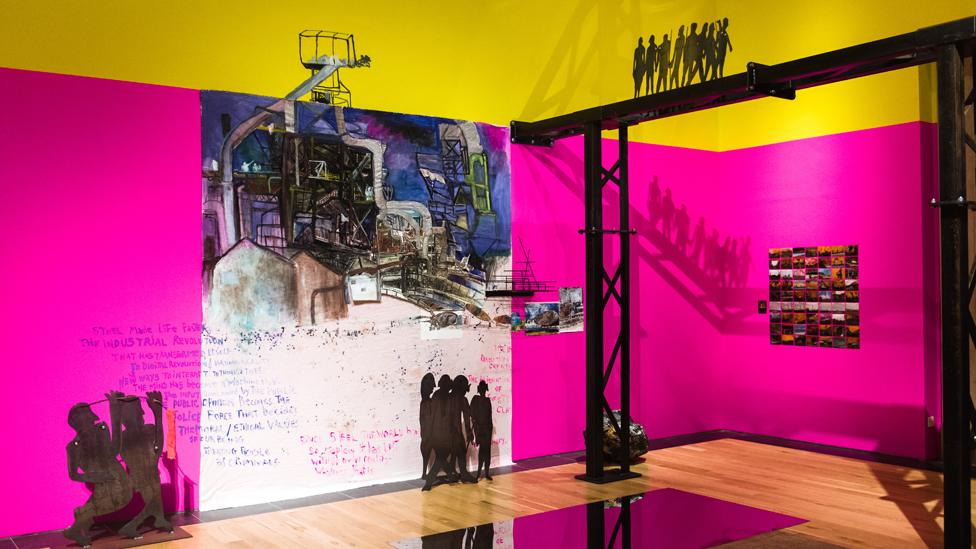
Anna Boghiguian's entry examines the worldwide steel industry, with special reference to Wales
Anna Boghiguian (Egypt/Canada)
Her installation A meteor fell from the sky examines the worldwide steel industry, with special reference to Wales, and combines collage, sculpture, text and painting/photography over two rooms. It is inspired both by a meteor and the impact of steel on the industrial revolution and communities in Wales today, as well how technology has evolved. Next month, Boghiguian will have her first UK retrospective at Tate St Ives.
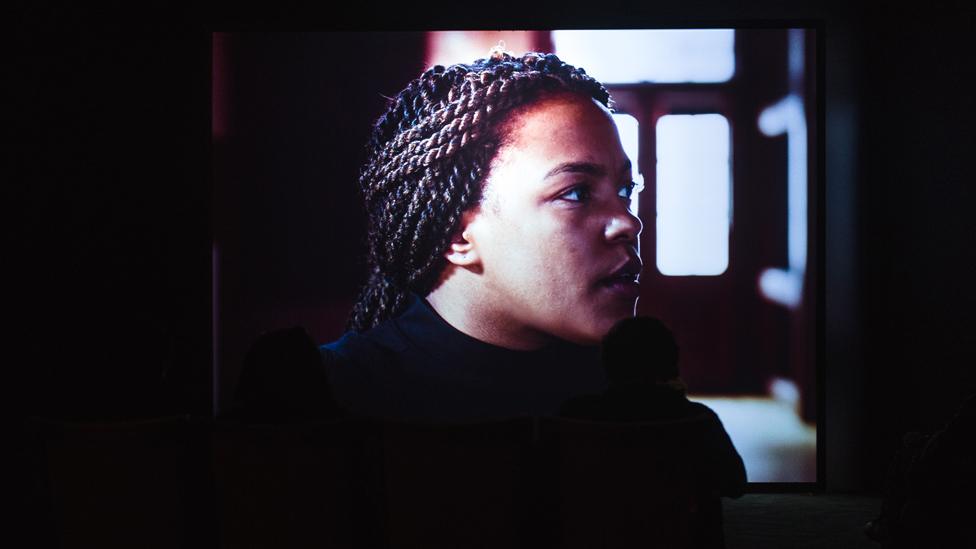
Bouchra Khalili's film Twenty-Two Hours looks back at the Black Panther Party in the United States nearly 50 years ago and the climate today
Bouchra Khalili (France/Morocco)
The Berlin and Oslo-based artist offers a video Twenty-Two Hours, which documents French poet Jean Genet's invitation to the United States by the Black Panther Party, an interview with a veteran Boston activist today and the role of the witness.
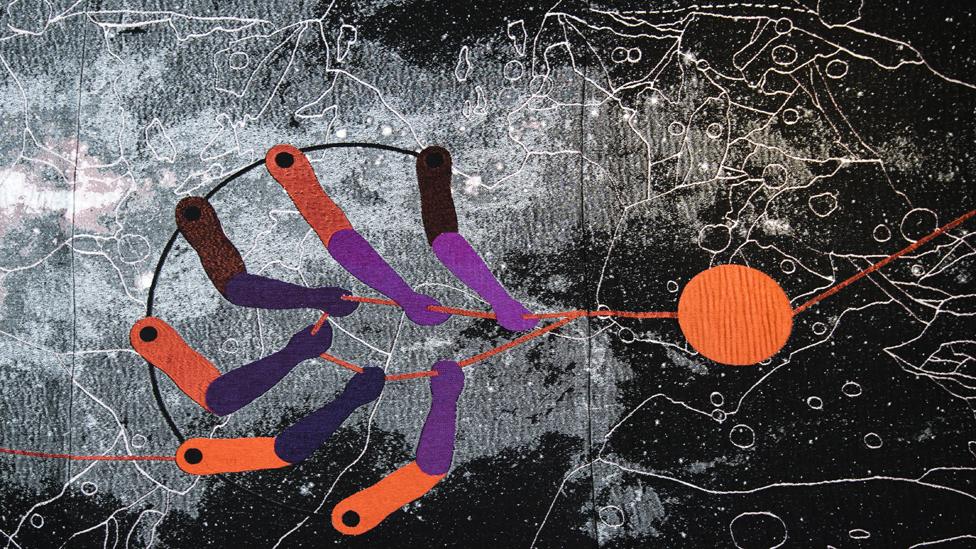
Detail from Otobong Nkanga's Double Plot tapestry
Otobong Nkanga (France/Nigeria)
The Belgium-based artist has two works at the end of the exhibition - a tapestry Double Plot on a curved wall over five panels, using eight different yarns but also photographic images which she says was "inspired around the notion of time," created with different perspectives.
There is also a circular ring of heated steel sculpture Manifest of Strains, which behaves a bit "like a body breathing" and which sees a rock levitating.
Her work explores changes in the environment.

Trevor Paglen's images
Trevor Paglen (United States)
The Berlin-based artist has already come to wider public attention after having his space sculpture Orbital Reflector launched into space last year.
He is showing photographs from ongoing series which turn the tables on the surveillance state - from blurry images of secret military installations to atmospheric images of satellites and debris orbiting the Earth.
His own diamond-shaped balloon is currently in orbit and is due back into the atmosphere soon.
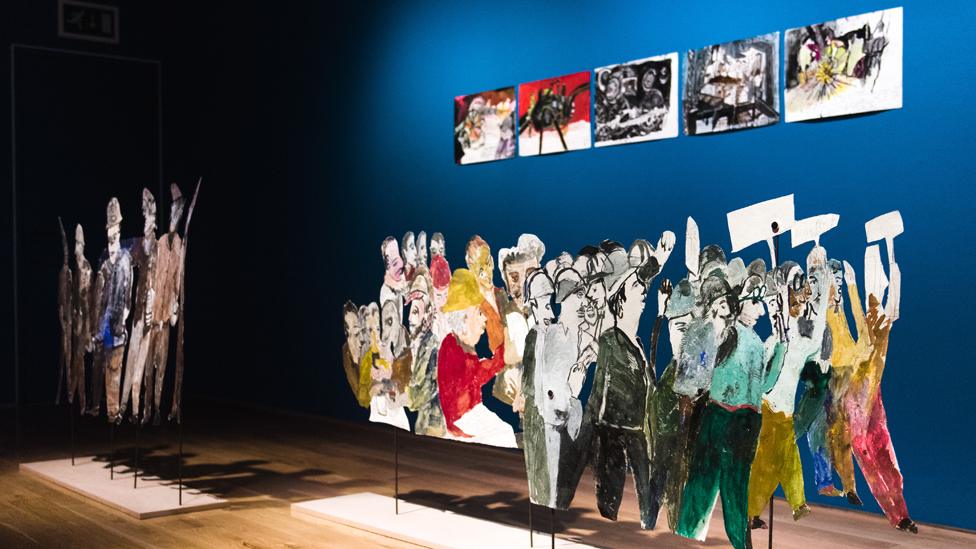
The shortlist includes an installation mixing collage, sculpture and painting by Anna Boghiguian
Analysis by Huw Thomas, BBC Wales arts and media correspondent
The Artes Mundi prize offers a glimpse of the world's most exciting, and often challenging, contemporary art.
This year the exhibitions have been confined to the galleries of the National Museum in Cardiff, constraining the art to one part of the city and helping to emphasise the jarring differences in styles and structures employed by the shortlist.
But the Artes Mundi legacy is one that spreads beyond the imposing museum steps.
With asylum seekers in Cardiff, and children in the Rhondda, Artes Mundi's team has forged links with communities who may never visit the exhibition but who are engaged in projects to respond to it, and create their own artworks.
The growing respect for this relatively young prize does incalculable benefits to Wales's reputation for contemporary art. The accents heard on a guided tour of the Artes Mundi galleries shows how visitors to Cardiff are drawn to the event.
And as proposals for a new national gallery of contemporary art are being considered by the Welsh Government, the international interest in tonight's winner reinforces the need for a permanent stage to display the best contemporary art from Wales and the world.

The prize, to showcase cutting edge but established artists from around the world, is awarded every two years.
The judges choose the shortlisted artists from 900 nominations - but what work they produce is up to them.
The first award in 2004 went to American-based Chinese artist Xu Bing, whose work was made from dust collected on New York's streets after the 9/11 terrorist attacks.
Back in 2015, winner Theaster Gates decided to split his prize among the nine other nominated artists.
Artes Mundi 8 is on show at National Museum Cardiff until 24 February and entry is free.
- Published13 September 2017
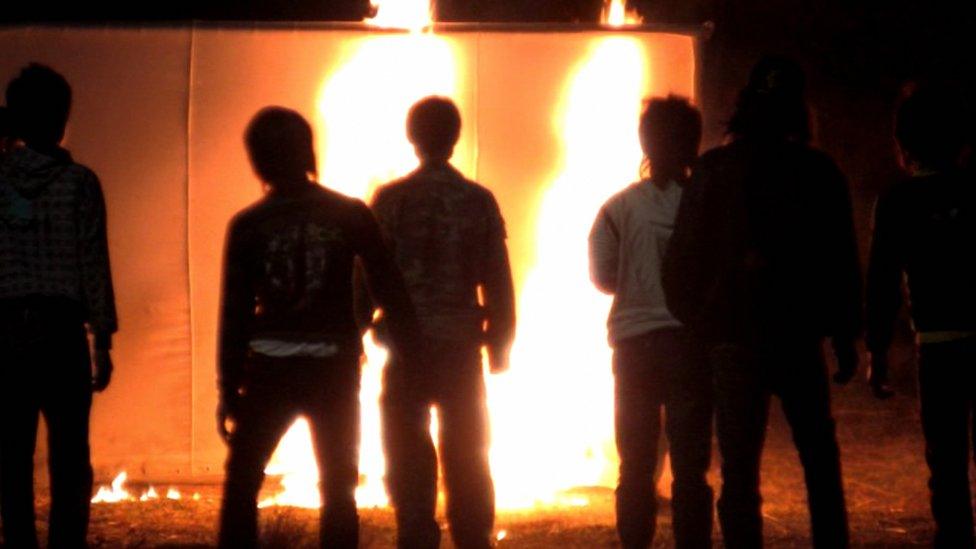
- Published26 January 2017

- Published20 October 2016
